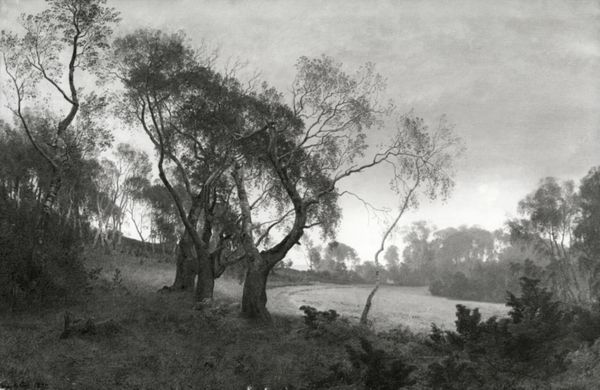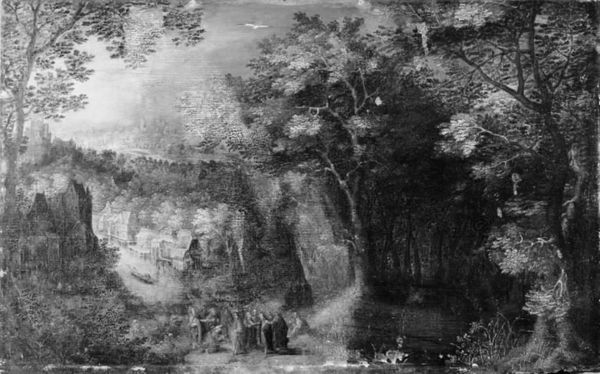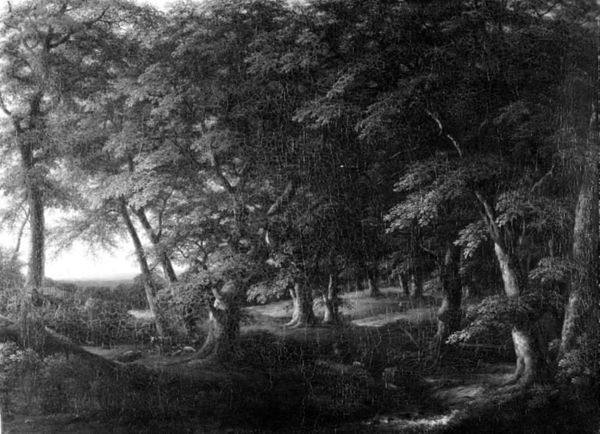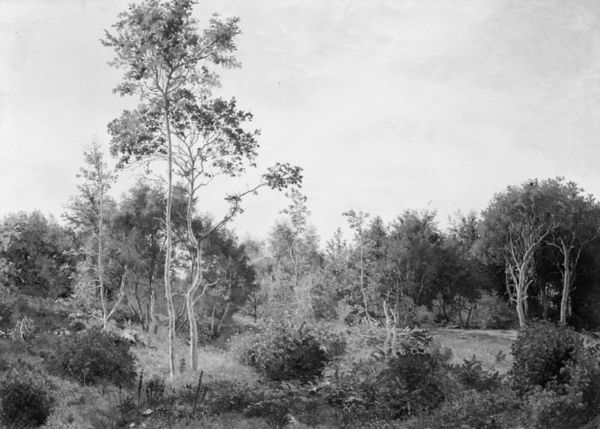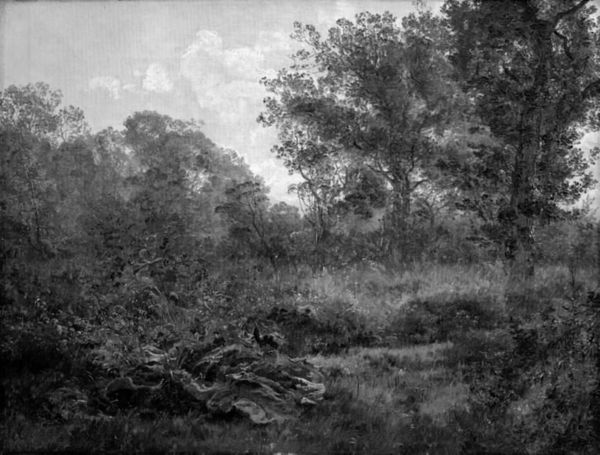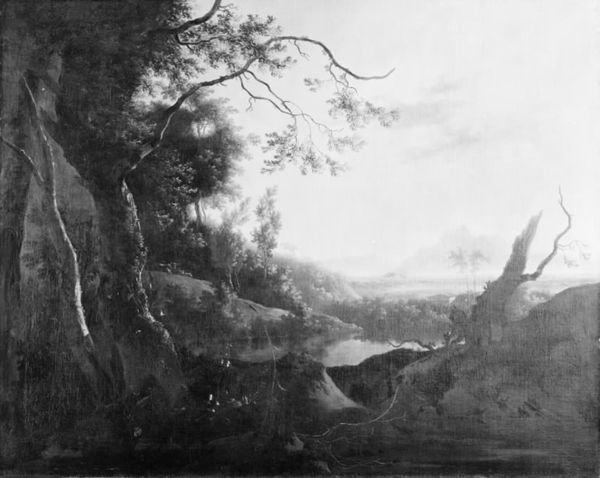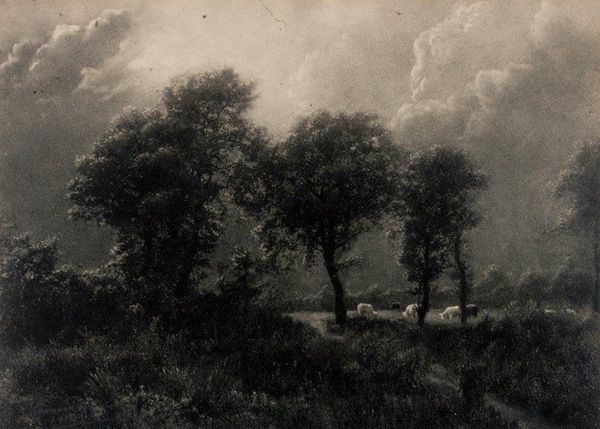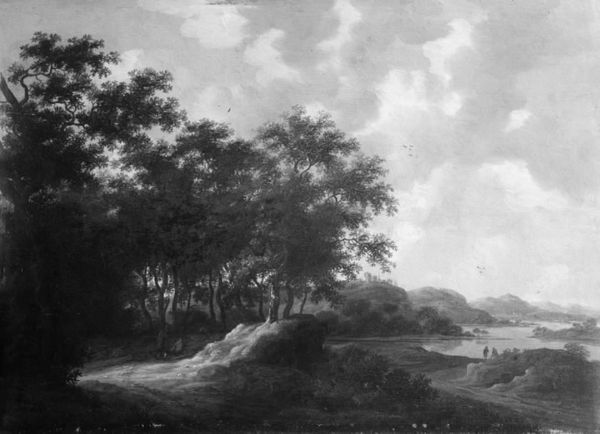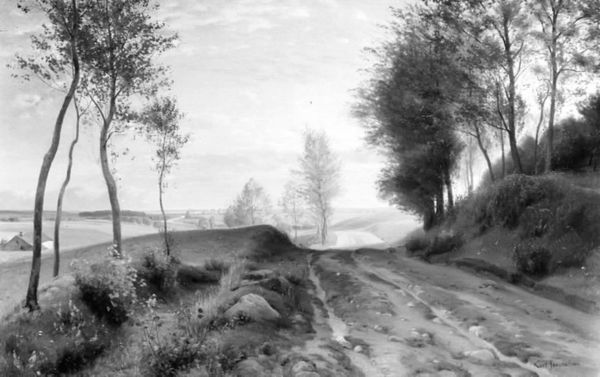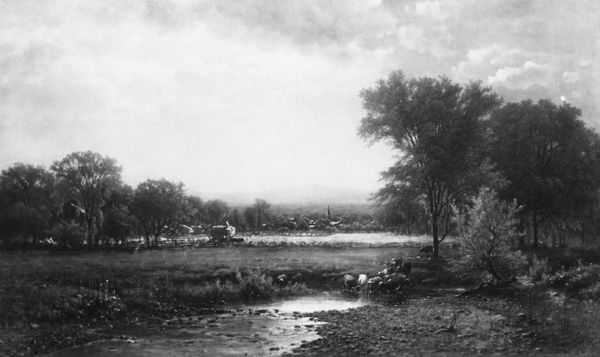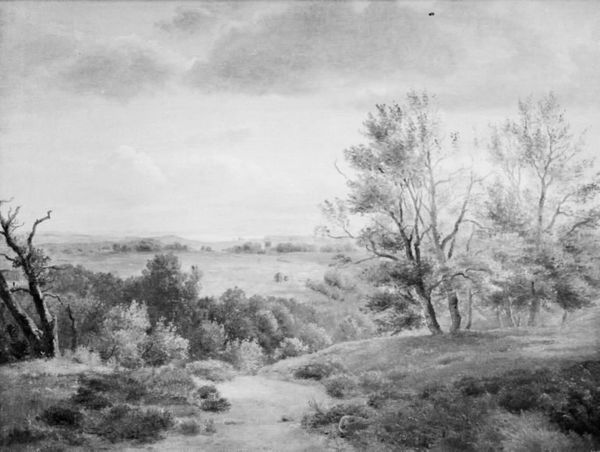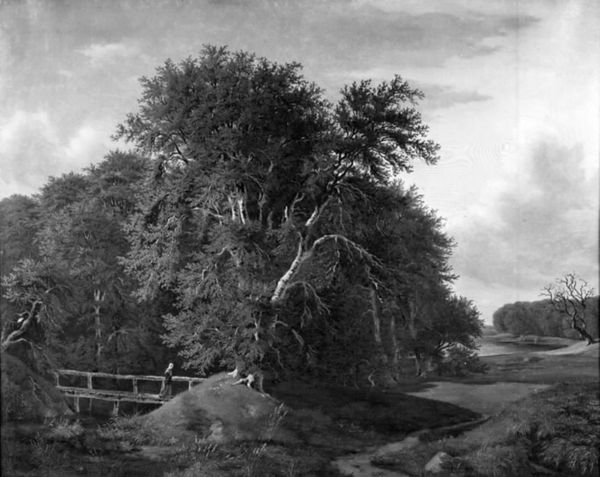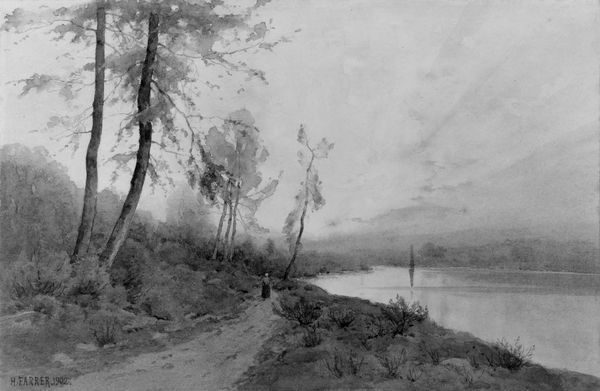
Dimensions: 60 5/8 x 50 1/2 in. (154 x 128.3 cm)
Copyright: Public Domain
Editor: Standing before us is Alexander Wyant’s "Broad, Silent Valley," painted between 1877 and 1887 using oil on canvas. It has a somber, almost brooding quality, a starkness emphasized by the near monochrome palette. What strikes you about this work, Professor? Curator: Primarily, the organization of pictorial space arrests my attention. Note the rigorous tripartite division: the dark, assertive foreground, dominated by densely textured brushwork, gives way to a nebulous middle ground, which subsequently dissolves into the ethereal light of the background. This systematic recession compels the eye, creating a sense of depth and spatial ambiguity. What formal devices do you observe employed? Editor: I see impasto used quite a bit to give the foreground texture and shape, particularly within the darker areas, which become flat as we move to the top. This seems deliberate. The horizon line itself isn’t very clear, is it? Curator: Indeed. This deliberate obscuring functions as a visual elision, prompting the viewer to actively participate in the completion of the landscape. Consider the way the artist manipulates value—the subtle gradations from dark to light. Are these value shifts only about creating an illusion of depth? Editor: No, I guess not. I suppose those shifts might function to represent some internal state, maybe something about nostalgia or loss. Curator: Precisely. Wyant transcends mere representational fidelity. The “broad, silent valley” becomes less a physical location and more a psychological landscape, reflecting the artist's own internal topography through masterful deployment of form. Editor: So the structure and brushwork help convey something beyond just a literal scene. I didn’t notice those psychological aspects when I looked at it first. Curator: Often, the true artistry resides not merely in what is depicted, but how it is articulated through the very grammar of painting. Thank you for noticing the psychological terrain.
Comments
No comments
Be the first to comment and join the conversation on the ultimate creative platform.
